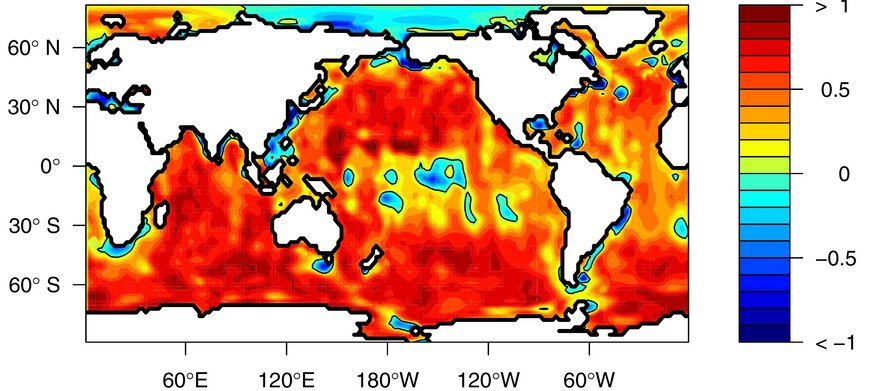Assimilation of satellite gravimetry observations into a global ocean circulation model
The ocean is a central part of Earths climate system. To estimate oceanic heat uptake, the mass related sea level rise has to be separated from the heat related contributions. The Gravity Recovery and Climate Experiment (GRACE) satellites have measured Earths gravity field with unprecedented precision. To study the distribution and generation of oceanic mass anomalies, spatiotemporal variable GRACE gravimetry observations are assimilated into a dynamic global ocean circulation model. The data assimilation method used for this task is an ensemble-based Kalman-Filter variant that operates on an optimal subspace of this very high dimensional problem. To consider errors in the atmospheric forcing, i.e., wind stress and freshwater flux, the Kalman-Filter is extended to employ an ensemble of individual forcings. Variances and covariances of the GRACE observation errors are estimated.
As a result the assimilation could show to what extend an ocean model can reproduce GRACE observations. In addition, the assimilation showed increased agreement to independent, i.e., not assimilated observations from in situ ocean bottom pressure recorders.

Reference:
Saynisch, J., Bergmann-Wolf, I., Thomas, M. (2015): Assimilation of GRACE-derived oceanic mass distributions with a global ocean circulation model. - Journal of Geodesy, 89, 2, 121-139. https://doi.org/10.1007/s00190-014-0766-0

